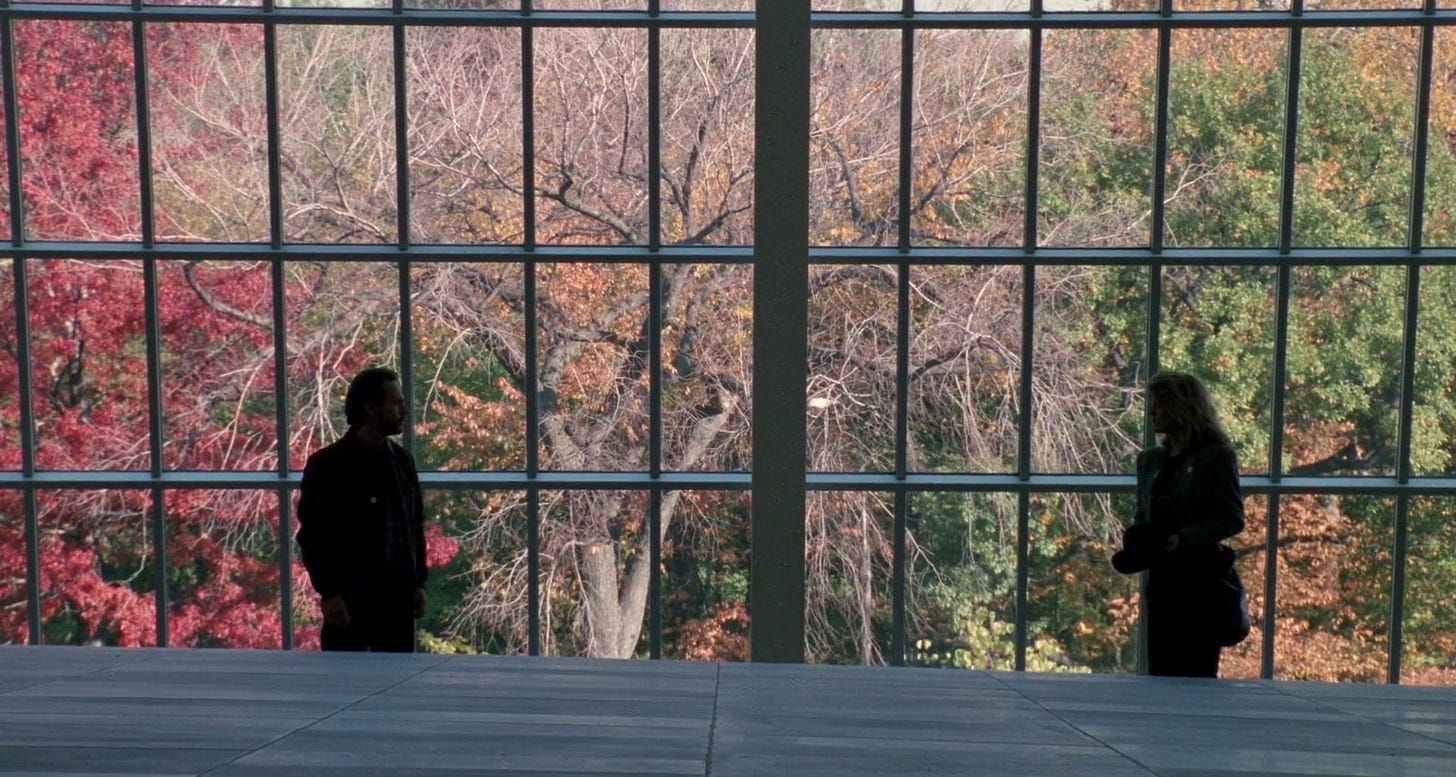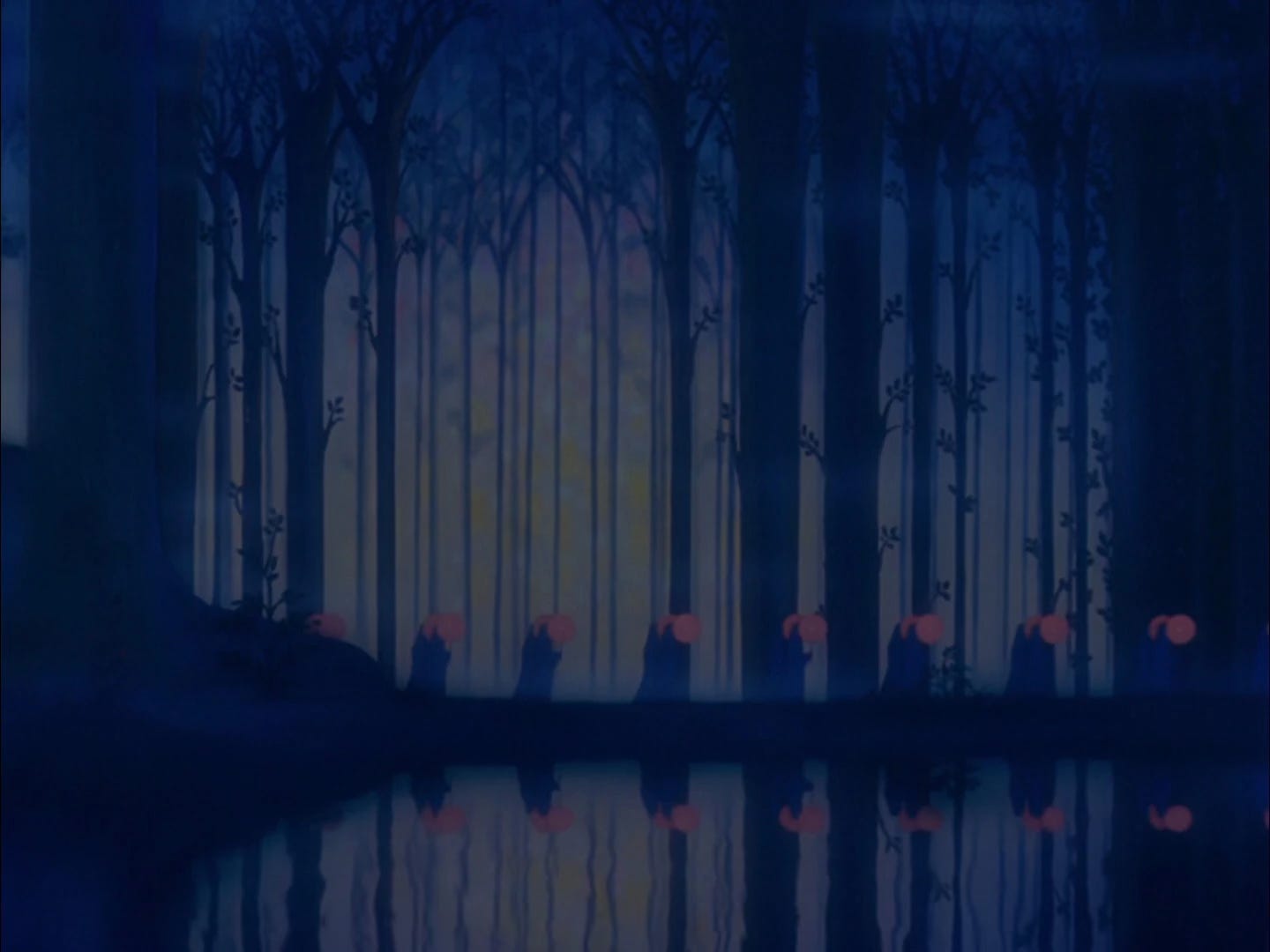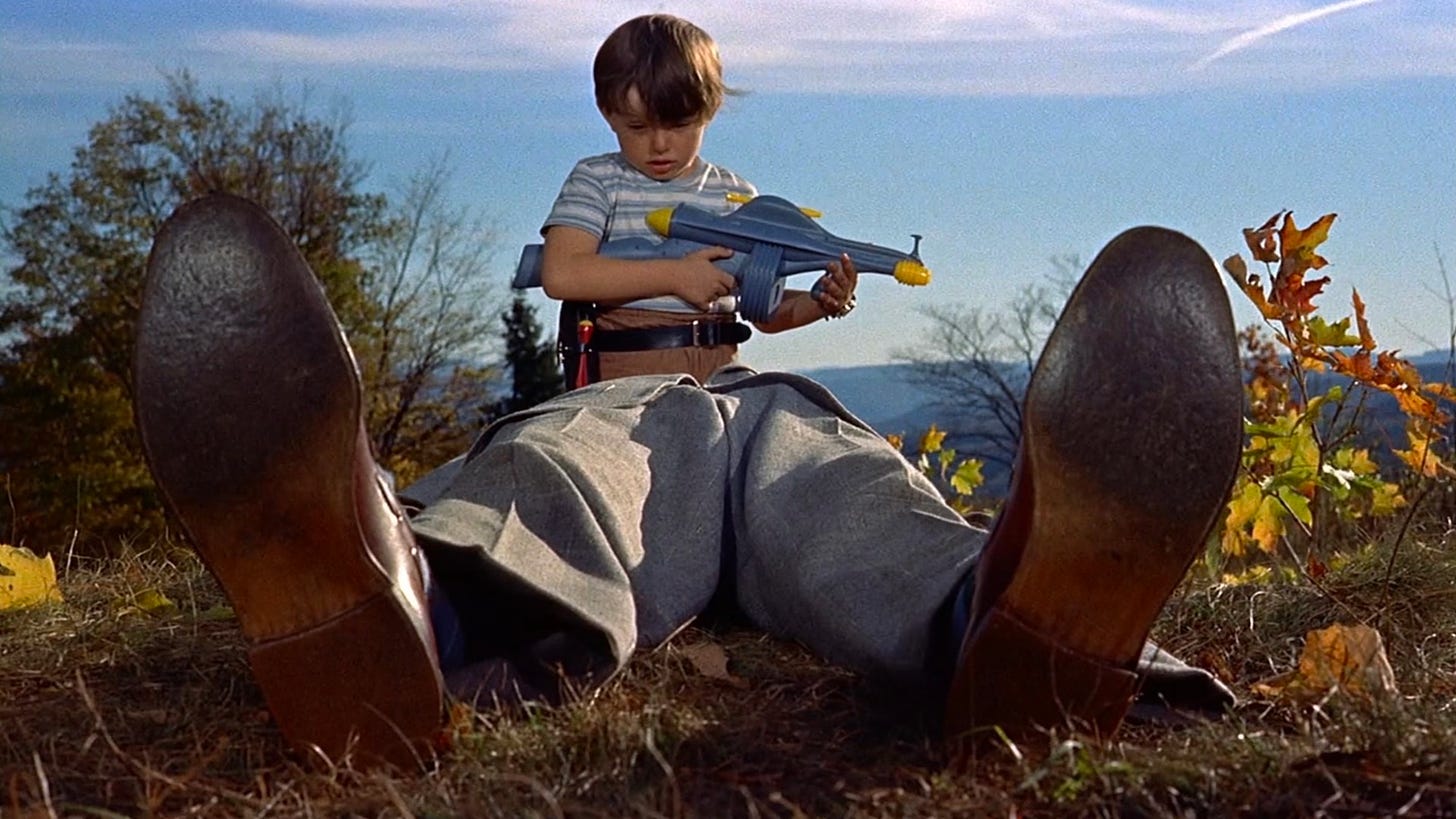It's time to light a candle, drink some tea and watch a movie
It's the most wonderful time of the year, as they say!
Stella’s Choices
“Summer is for swimming, spring is for running in the fields collecting daisies, winter is for waiting for the snow. But autumn? Autumn is for cozying up with a hot beverage of your choice, spiced, scented candles burning beside you, and either reading a book or watching a movie. That’s where we come in.
Being a huge movie buff, it was quite difficult to narrow it down to just 6 films, but also being a huge buzz killer my selection includes the most heartbreaking film I’ve ever seen. M’excuse!”
When Harry Met Sally (1989)
Sure, it’s a cliché—but I absolutely love clichés, and I couldn’t leave out the most autumnal movie of all. You won’t find an autumn movie list without this one, and for good reason. Meg Ryan and Billy Crystal strolling through Central Park as the leaves glow in perfect shades of red, yellow, and terracotta; Meg Ryan having lunch with Carrie Fisher at the Central Park Boathouse; the Temple of Dendur at the MET; the bookstores. It’s New York at its absolute best.
Images (1972)
This is my favourite Robert Altman film, it’s quite far from anything else he has done. The movie explores the fractured mind of children’s author Cathryn (Susannah York). After receiving some intimidating phone calls at her flat in London, her distress is enough to convince her husband Hugh (René Auberjonois) to take her to their remote cottage in the Irish countryside.
There, the isolation plays on Cathryn’s mind. She begins to see Hugh transform into her dead lover René (Marcel Bozzuffiand). The hallucinations turn more visceral as Cathryn’s mental state worsens, and she is haunted by a doppelgänger. Turning to violence, she holds a shotgun, but against what and whom exactly constantly shifts.
The film is a study in fractured identity even down to the characters sharing names with different members of the cast.
Ascenseur pour l'échafaud (1958)
A photo just can’t capture Jeanne Moreau’s greatness in this scene accompanied by this score by Miles Davis, a masterpiece in itself. Filmed almost entirely at night, the film walks us through a cold and melancholic Paris, enhancing the despair of the main characters. We follow Florence searching everywhere for Julien (Maurice Ronet) after he has murdered his boss, also the husband of his mistress-Florence-, which unintentionally provokes an ill-fated chain of events. Louis Malle demonstrates that chance is just as influential as choice, portraying destiny as both a product of individual decisions and an unstoppable force that controls them.
Umberto D. (1952)
This neorealist masterpiece by Vittorio De Sica follows an elderly pensioner as he strives to make ends meet during Italy’s postwar economic recovery. Alone except for his dog, Flike, Umberto (Carlo Battisti, actually a university lecturer who had not acted before) struggles to maintain his dignity in a city where human kindness seems to have been swallowed up by the forces of modernization. The beauty of the film is that it does not reach for its effects or strain to make its message clear. I don’t want to say much, just that this is the most heartbreaking film I have ever seen.
Sorry, Wrong Number (1948)
Maybe it’s not the best Noir film out there, nor the most well-known, but I can’t resist Barbara Stanwyck's charm and a murder suspicion. The story is about Leona Stevenson, who is confined in bed and uses the telephone to keep in contact with the outside world. One day she overhears a murder plot on the telephone and she is desperate to find out who is the intended victim.
Fantasia (1940)
I first watched Fantasia when I was very little and I still remember the shock and exhilaration from that first viewing. The masterful score is conducted by Leopold Stokowski and it is divided into 8 sections. “Toccata and Fugue in D Minor”, “The Nutcracker Suite”, “The Sorcerer’s Apprentice”, “The Rite of Spring”, “Intermission”-not technically a section per se but it does include a jam jazz session, when jazz was considered ‘an antidote to serious music’!-, “The Pastoral Symphony”, “Dance of the Hours”, “Night on Bald Mountain”. It’s a masterpiece of sight and sound ; the music comes to life and we hear the pictures turn into symphonies. The kind of film that gets you overwhelmed with wonder by the fact that movies even exist!
Valisia’s Choices
“Everyone who knows me can attest to my ultimate obsession with horror movies. And what better time to dive into a good scare than when the first crisp whispers of autumn roll in. There's something uniquely cozy about being wrapped up in a warm blanket while experiencing the chills and thrills of a good horror movie, especially against the backdrop of long, dark, and chilly nights. Naturally, my watchlist is packed with the spookiest and most terrifying titles—perfect for the season.”
The Innocents (1961)
The Innocents stands as one of the greatest gothic horror films ever created, an atmospheric masterpiece based on Henry James’ “The Turn of the Screw”. The opening credits will already send chills behind your spine with the hauntingly and eerie voice of a young girl singing "Oh Willow I Die" against a pitch-black screen, only for a flickering candle to suddenly pierce the darkness—a menacing image that imprints itself in your mind.
Don`t Look Now (1973)
Don't Look Now is a hauntingly beautiful and deeply unsettling film, elevated by the commanding presence of one of my favourite actors, Donald Sutherland. Set against the haunting backdrop of Venice—a city whose labyrinthine canals and decaying beauty cast an eerie spell—this is the story of two grieving parents, grappling with the devastating loss of their daughter, who drowned in a tragic accident. The city's ominous atmosphere mirrors their psychological disorientation, creating a setting as much a character as the protagonists themselves.
Suspiria (1977)
Dario Argento’s Suspiria, is a feast for the senses. A film that pushes the traditional boundaries of horror, immersing the viewer in a vivid, nightmarish world where every element—color, setting, and sound—works in harmony to unsettle and captivate. It’s not just a story but an experience that lingers in your mind, dazzling and disturbing in equal measure. An experience that combines surreal artistry, psychological tension, and supernatural horror, all wrapped in an atmosphere of haunting beauty. Also, a major highlight is Goblin’s unforgettable score.
The Changeling (1980)
A masterclass in building tension. Unlike many horror films, The Changeling doesn’t bombard viewers with special effects or gore. Instead, it employs subtle storytelling—an antique wheelchair moving on its own, a piano key pressed in an empty room, or the infamous bouncing ball—to create moments of pure, spine-chilling terror.
Fright Night (1985)
I’m a huge fan of 80s teen horror films, and Fright Night is the perfect embodiment of everything I love about that era. There’s a delightful blend of campy charm, supernatural suspense, and over-the-top fun that makes it stand out in the genre. It has everything! For starters, a sexy, fully 80s-styled vampire—everything from the slick hair to the killer wardrobe oozes the essence of the decade. Then, there’s the horror TV program host, a former vampire hunter turned local celebrity. And of course, an ultimate, sensual dance duo in a disco, grooving to the haunting tune “Good Man in a Bad Time” by Ian Hunter. Bonus tidbit: Keep an eye on Amy, the protagonist's alluring girlfriend who slowly transforms into a vampire. Does she remind you of someone? That's right—she’s played by Amanda Bearse, famously known as the no-nonsense Marcy from the TV show “Married... with Children”.
Alexandra’s Choices
“If you’ve ever wondered, are there actually people who enjoy the winter time change? The early darkness, grey skies, moody weather? Well, hi, it’s me! I love this season. The second the clocks turned back, my soul let out a sigh of relief. Finally, a break from the unbearably hot, sticky, and way-too-much-effort summer. I’m all about that 5 p.m. darkness (and I couldn’t care less if the rest of the world is in hibernation). Give me green tea, many pillows, a fireplace, and a good autumnal movie, and I’ll call that the perfect Saturday night. So, here are a few autumnal movie picks to match the mood; each one full of warmth, wit, mystery and a touch of melancholy, just like the season itself.”
Fallen Leaves (2023)
Fallen Leaves is Kaurismäki at his best—dry humor, sharp humanity, and just enough absurdity to make the melancholy go down easy. In a Helsinki that feels stuck in time, Ansa and Holappa meet: she’s fired for feeding the hungry with "expired" supermarket goods, he’s caught in a loop of drinking and depression (“I’m depressed because I drink, and I drink because I’m depressed,” he says, like it’s the weather). Their love story is awkward, tender, and filled with nods to cinema greats like Jarmusch -on their first date, Ansa and Holappa go to see The Dead Don’t Die- and Godard. Between the jokes, the film sneaks in commentary on modern life, from Ukraine war updates crackling on radios to small personal crises that feel just as heavy. It’s melancholic, and somehow still hopeful.
An Autumn Afternoon (1962)
I love Japanese cinema, and An Autumn Afternoon is one of those films that says so much by doing so little. Set in 1960s Tokyo, it follows Shuhei, a widower gently navigating his daughter’s impending marriage and the quiet heartbreak of her leaving home. The simplicity is hypnotic—every frame carefully composed, every moment deeply felt. It’s about love, sacrifice, and the way life moves forward whether we’re ready or not. Nothing feels pushed or overdone; it just unfolds honestly, and that’s exactly why it stays with you.
Twilight (1990)
I saw this film at the Athens International Film Festival last October, and it hasn’t left me. Maybe it was the timing— constantly rainy, very dark, properly autumnal—but this one feels tailor-made for a fall cinema list. The story? Bleak. Three young girls, murdered in a similar manner, their bodies found in the dense and murky woodlands of provincial Hungary. The only suspect, a young man everyone assumes is guilty, takes his own life before we can even figure out the truth. But Twilight isn’t about clean resolutions. It’s about this creeping, inescapable sense of evil—something you can’t quite explain but can definitely feel. Sound familiar? It should.
The Trouble with Harry (1955)
Well, the thing about Harry is… he’s dead. And everyone in town has their own idea of what to do about it. Cue a sheriff, a charming artist named Sam, and a small New England community unraveling secrets against an autumnal dreamscape of ochre, terracotta, and russet leaves. Of course, Alfred Hitchcock’s The Trouble with Harry belongs on any list of fall favourites. It’s darkly funny, delightfully weird, and perfectly moody. I’ll leave you with this quote from Sam: “All right. If I had my choice, I’d rather be thought a murderer than proved one.”
A Charlie Brown Thanksgiving (1973)
So, Peppermint Patty invites herself over to Charlie Brown’s for Thanksgiving—oh, and she brings a few friends too. Naturally. Poor Charlie, with the help of Linus, Snoopy, and Woodstock, tries to throw together a Thanksgiving dinner, which ends up being... let’s just say, creative. I know this probably sounds a bit random compared to the other films on this list, but you know what? I love this special. The voice acting is peak ’70s, the humour is timeless, and it’s the kind of thing you can watch and instantly feel cozy.
Happy watching!
See you next week x




















